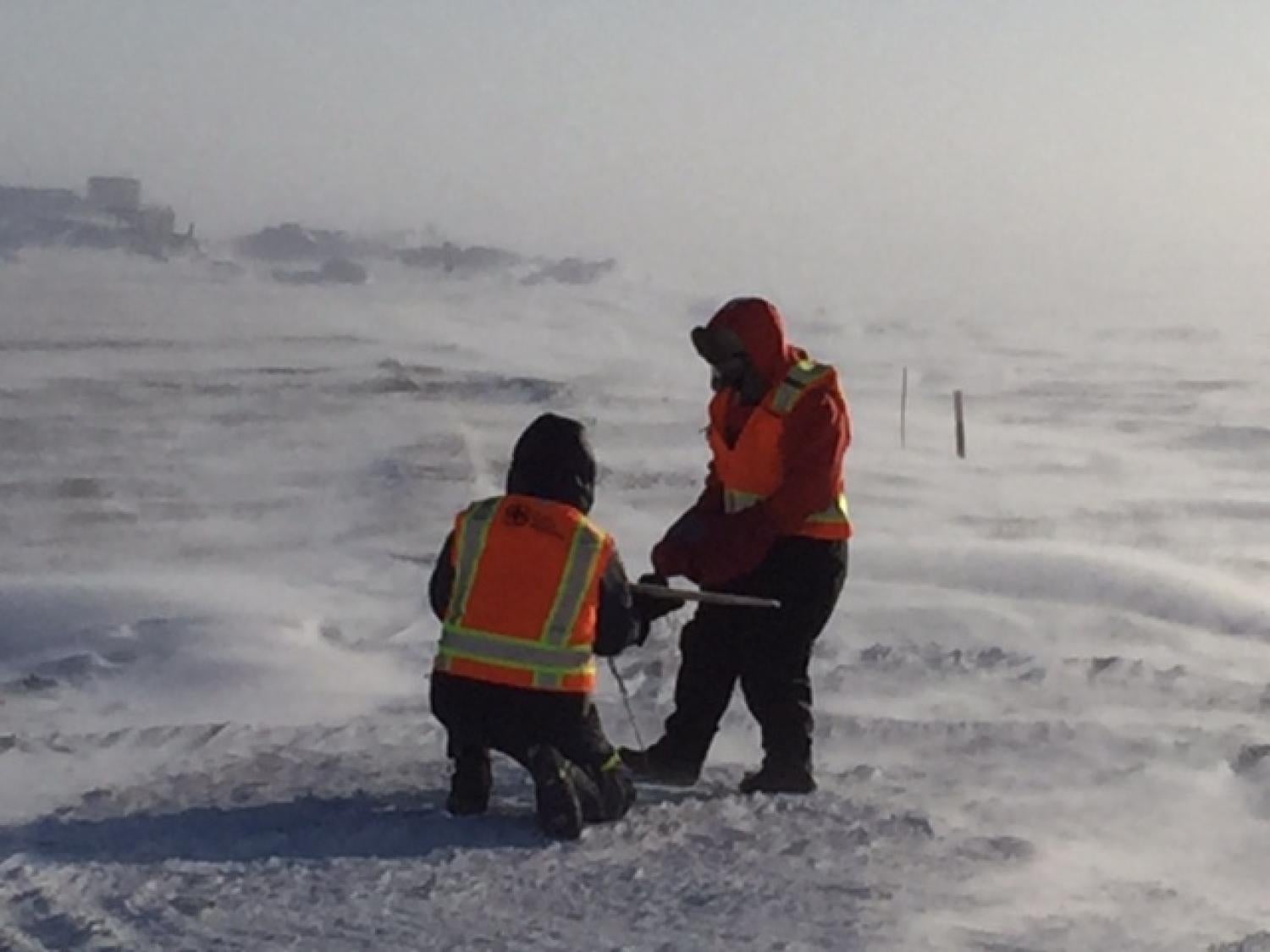ERASMUS Spring Campaign Start Up

A small team from RECUV (Gijs DeBoer, Doug Weibel, Tevis Nichols and Phillip D’amore) arrived in the arctic on April 2nd for a two-week campaign for the Evaluation of Routine Atmospheric Sounding Measurements using Unmanned Systems (ERASMUS) project. The weekend was spent preparing aircraft and sensor systems for flight. All equipment for the two week campaign had to be shipped through Prudhoe Bay and out to the Atmospheric Measurement Facility (AMF) at the Oliktok Point Long Range Radar Site (LRRS). With no ability to order parts or tools at the site, absolutely everything we might need had to be shipped in advance. The monumental packing effort was executed flawlessly by our colleaugues back in Boulder and as a result flight preparations preceded without any major issues.
Three aircraft were shipped to the arctic. Two small DataHawk aircraft, equipped for basic atmospheric measurements, and one larger Pilatus aircraft configured to carry radiometers and the Printed Optical Particle Sensor (POPS). With the full sensor load this aircraft weighs over 50lbs.
The Pilatus UA outfitted with RS-92 Pressure, Temperature, Humidity sensor, SPN-1 radiometers, POPS and CGR4.
Unfortunately, while preparations proceeded smoothly, the weather turned rough. Winds were moderate when the team arrived but began to increase into the 35-45mph range Sunday night. By Monday morning, a winter weather advisory was in effect, visibility was limited, and large snow drifts began to impede mobility on the roads. In such conditions, launching and landing the Pilatus is too risky to attempt and the slower Data Hawks are in danger of being blown away. As a result flight operations were postponed.
Conditions have been windy and a bit cold to say the least.
Instead, we spent Monday morning running through ground tests to prepare for flight operations when the weather eased. Monday afternoon was a bit of a break, winds remained too high to fly and with site access limited by rapidly drifting snow, we did what work we could at the ENI camp.
Tuesday morning winds eased into the low 20mph range and temperatures climbed above 0F; the decision was made to attempt a DataHawk flight. Unfortunately while the weather was warmer that’s a relative term and one of the DataHawk’s elevon servos (this aircraft has no horizontal tail so elevator and aileron functions are performed by the same surfaces) was responding sluggishly in the cold. In the end, the control delay, combined with the high winds made controlled flight all but impossible. Doug managed to keep the plane aloft after the bungee launch but shortly after beginning the turn toward the planned flight area, it crashed on the Tundra.
Gijs DeBoer and Doug Weibel prepare to launch a Data Hawk unmanned aircraft in challenging conditions.
Recovering a plane in the arctic is bit tougher than picking up a Tempest out on the plains in Colorado. The short walk to the crash site required three people, survival suits, and a shotgun to protect against potential polar bear encounters. Damage however was light, and with quick repair to the left elevon, and a new servo to replace the one which had responded slowly earlier, the plane was again ready for operations.
Unfortunately a serious problem with the autopilot was found during the attempt. All radio communications were lost between plane and ground station at takeoff and could not be restored. The brief flight was conducted entirely on manual control, but a solution to this problem is needed to allow for automated DataHawk flights in future. With winds increasing again at midday, we returned to the camp to work on a solution in the afternoon.

